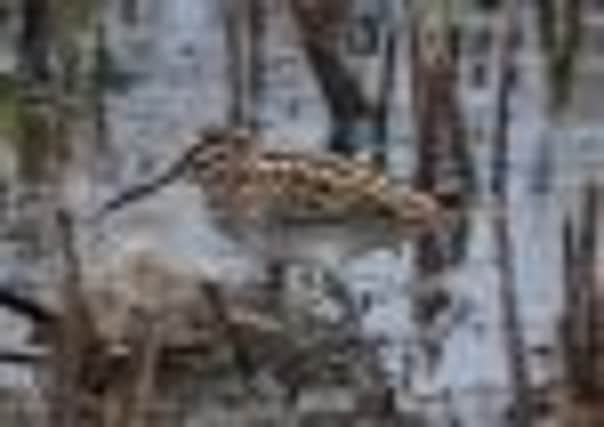Birdwatch: Early arrivals flock to region as winter looms


The first three whooper swans returned to Natural England’s Derwent Valley Nature reserve between York and Selby, their main overwintering site in Yorkshire and where a record 200 were to be found last year, while last Thursday two called in at Swillington Ings, Leeds, the earliest site record by 15 days.
Wildfowl numbers in the Lower Derwent Valley are also steadily building up with 260 wigeon and 500 teal present.
Advertisement
Hide AdAdvertisement
Hide AdThere have also been daily sightings of pink-footed geese moving down the east coast to their wintering grounds in Norfolk and on the Humber from their breeding grounds in Iceland.
Another winter visitor that is starting to be seen again is the jack snipe, with one showing well in front of the Bittern Hide at the Old Moor reserve near Barnsley and another nearby at Denaby Ings. One was also seen this week at Astley Lake, Leeds.
The jack snipe is about half the size of the common snipe and with a much shorter bill and has a unique bouncing action while feeding as if its whole body is on springs.
Very large numbers of siskins and redpolls have also been arriving in the region, at this stage probably birds moving south from British breeding sites rather than birds that have come in from the Continent.
Advertisement
Hide AdAdvertisement
Hide AdThere have also been large numbers of meadow pipits heading south with three-figure counts at a number of sites while there was a day count of 1,990 linnets moving south at Spurn, the largest count for at least 13 years.
The first brambling of the autumn was seen at Spurn at the weekend while an ortolan bunting was caught and ringed at the Warren and a Richard’s pipit seen at Clubley’s Field. Eleven common buzzards were seen flying south.
A Lapland bunting was also seen at Spurn while three were seen over Hunmanby Gap and six over the Saltholme reserve on Teesside.
Some short-eared owls are also starting to be seen with two on the Brough Airfield Marsh, East Yorkshire.
Advertisement
Hide AdAdvertisement
Hide AdA juvenile buff-breasted sandpiper continued to be seen in a sheep field just to the north of Thornwick Bay, Flamborough, while another American wader, a pectoral sandpiper, was present this week on the main lake at Pugney’s Country Park, Wakefield.
Both are part of the largest arrival of these two species in Britain for many years
A juvenile American black tern remained at Covenham reservoir, north Lincolnshire while 24 black terns were seen at Nosterfield Quarry, North Yorkshire, ten at Spurn and 15 at Angler’s Country Park, West Yorkshire, part of a large movement through inland sites involving several hundred birds.
A black-necked grebe and four red-crested pochards were also present at Angler’s Country Park while a juvenile gannet was seen at the Old Moor reserve, South Yorkshire..
Advertisement
Hide AdAdvertisement
Hide AdAs some birds were arriving for the winter, the summer visitors were taking advantage of the warm sunny weather to feed on insects and build up reserves for their long journey to Africa.
Swallows and house martins are pausing to feed over lakes and marshland while there was still two swifts lingering at the Fairburn Ings reserve near Castleford last week.